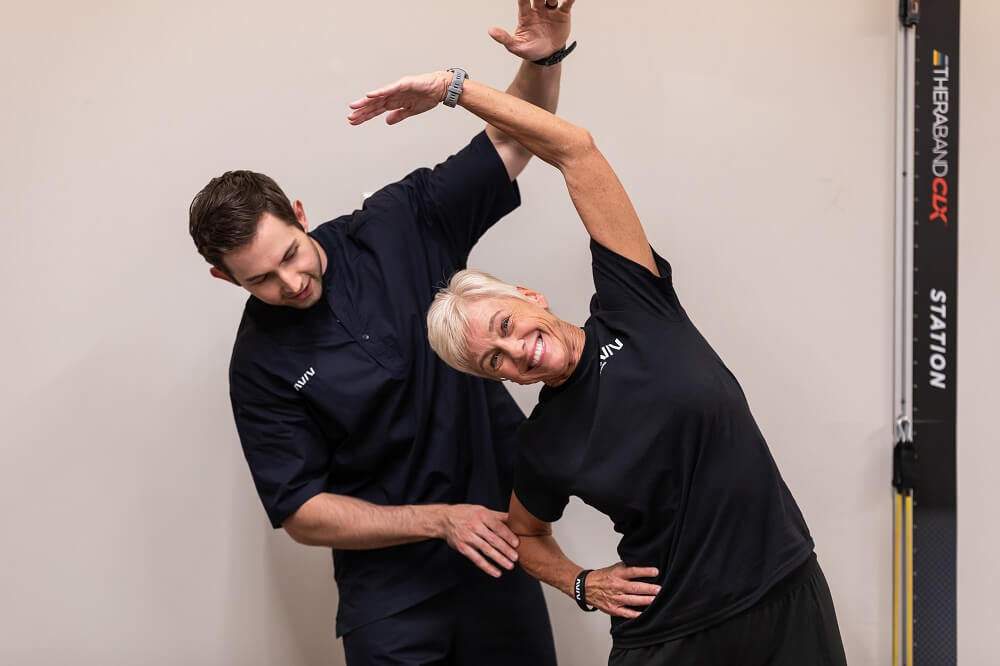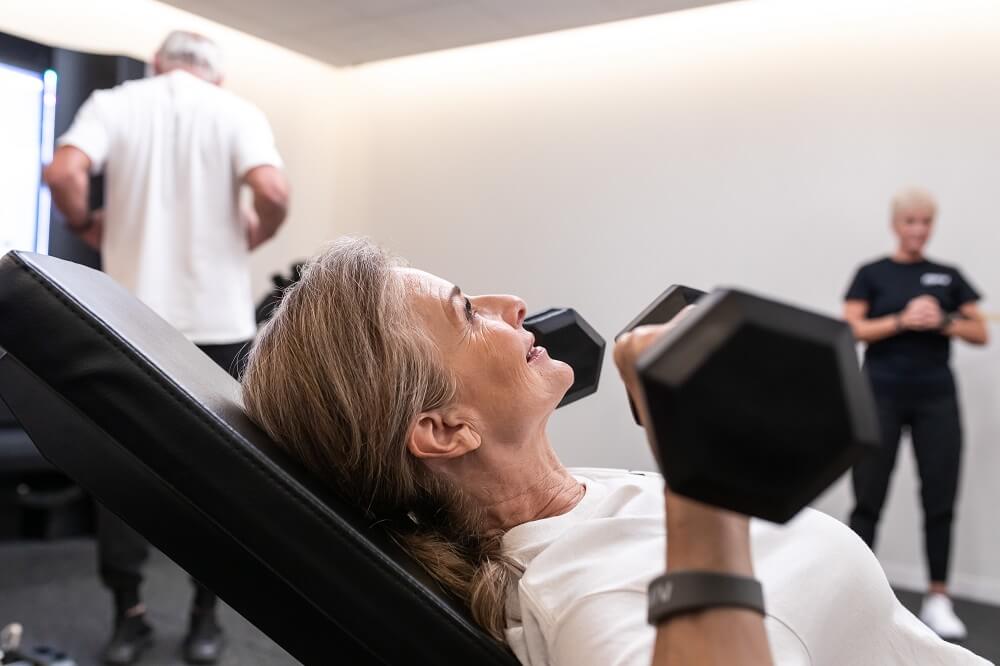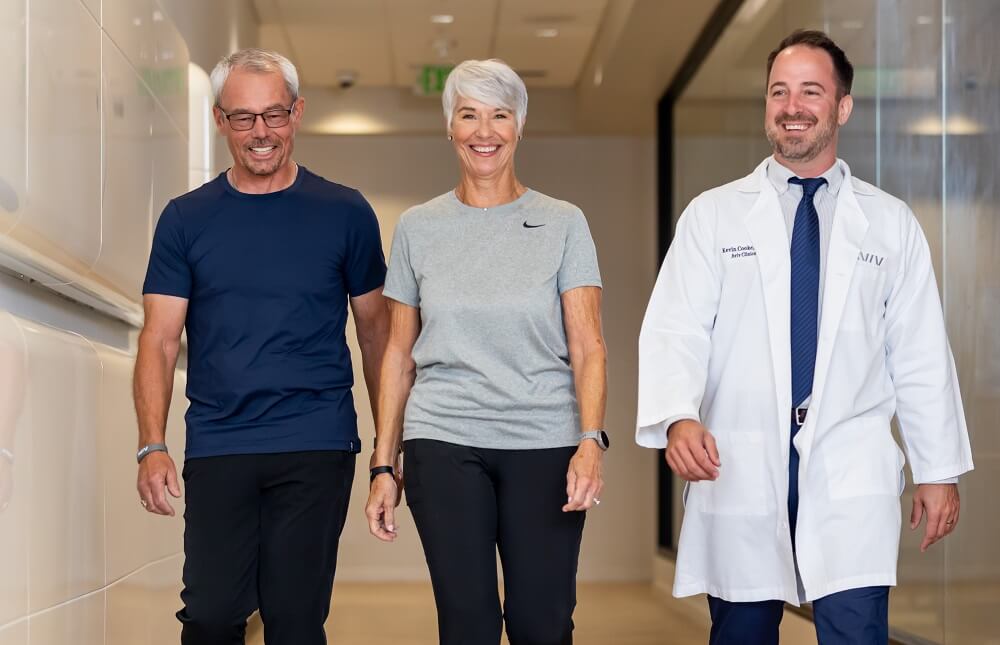
Exercise and Brain Health: How Physical Activity Boosts Cognitive Function


Maintaining good health has long been recognized as essential for overall well-being. But did you know that exercise and brain health are deeply connected? Regular physical activity does more than strengthen muscles and improve cardiovascular fitness. It also promotes cognitive function, enhances memory, and protects the brain against age-related decline.
Exercise and brain health are closely linked. Researchers have found that regular physical activity can delay the effects of both normal physiological aging and neurodegenerative conditions, improving memory, attention, and executive functions. Understanding how exercise is good for the brain can help you choose the right types of activity and make the most of your workouts.
From heart-pumping aerobic exercise to iron-pumping strength training, learning how to incorporate brain-boosting movement into your routine is one of the most powerful steps you can take for long-term cognitive health.

Cognitive Changes With Age (and Why Exercise Matters)
As we age, a slight level of cognitive decline is inevitable due to the normal aging process. Minor issues with memory and slower thinking are to be expected. But older adults are also increasingly at risk for mild cognitive impairment, including “conceptual reasoning, memory, and processing speed,” as well as dementia, which includes conditions like Alzheimer’s disease.
Some of the risk factors for these conditions are out of your control, such as age, genetics, and family history. However, your overall health plays a role, too. In the event of an unexpected incident, such as a stroke, your general health and wellness become focal points for your recovery.
The more proactive you are with your health, no matter your risk factors or circumstances, the greater your investment in your long-term health potential. Basically, staying healthy and active can help protect your brain.
How Exercise and Brain Health Are Connected
Healthy habits, including a nourishing diet and regular physical activity, are critical players in the healthy aging process. Emerging research discovered that exercise is linked to “improved cognitive performance in older adults with and without cognitive impairment.”
These results are promising for anyone concerned about maintaining cognitive and brain health as they age, especially considering the aforementioned risk factors beyond their control. This occurs primarily because exercise impacts the brain on both a short- and long-term basis, with measurable benefits occurring in both instances.
The Science Behind Exercise and Brain Health
How does exercise affect your brain? Any time you exercise, you’re pumping more blood to your brain tissues. Increased blood flow means more oxygen and other nutrients vital for the brain’s functioning.
In response, the brain also cranks out some helpful molecules, many of which “improve cognitive processes and memory.”
Here are just a few benefits of exercise for the brain:
- Neurotransmitters (NTs) like serotonin, norepinephrine, and dopamine are released, improving mood, motivation, focus, attention, and learning.
- Brain-derived neurotrophic factor (BDNF) helps your brain repair and rebuild, creating new neurons and connections.
- Hormones work with BDNF and can boost your mood and mental clarity.
- Endorphins and other molecules are released, helping relieve pain.
- Increased blood flow delivers nutrients and carries away waste products.
- The hippocampus increases in volume.
Two areas of the brain are particularly important when it comes to cognitive decline: the hippocampus and prefrontal cortex (PFC). These areas are the most susceptible to cognitive degeneration or impairment.
1. Exercise Benefits for the Hippocampus and Memory
The hippocampus, which is responsible for memory and learning, is affected by exercise in a few ways. Studies show that with aerobic exercise, brain matter shows “an increase in volume of the left and right hippocampus,” an area that often declines in volume as we age. The hippocampal decline also occurs significantly with Alzheimer’s disease, which can be “reduced by 25%” for those with the condition. The hippocampus is also a primary area where neurogenesis (creating new brain cells) can occur with sufficient exercise.
2. Benefits of Exercise for the Prefrontal Cortex and Executive Function
The other region benefiting directly from exercise is the prefrontal cortex, or PFC. The prefrontal cortex is sometimes called the brain’s “CEO,” as it is responsible for most of our executive functions, including decision-making, attention, problem-solving, and goal-setting. Studies show that older adults, in particular, can benefit from exercise due to increased “executive functions mediated by the PFC.”
Maximizing Brain Health Through Holistic Exercise
Exercise benefits brain health significantly because it involves so many bodily processes simultaneously.
Exercise, for both your body and mind, is a powerful practice that can help build confidence, aid in recovery, and even help to stimulate processes “related to cell survival and neuroplasticity” (the brain’s ability to change and adapt).
Aviv Clinics clients receiving the innovative Aviv Medical Program optimize their brain health. Their personalized treatment plan can combine cognitive exercises alongside physical training, nutritional coaching, and Aviv’s unique research-backed hyperbaric oxygen therapy (HBOT) protocol. As part of the program, many clients perform dual-task exercises on the cutting-edge h/p/cosmos medical treadmill at the clinic. This combination of physical and cognitive effort maximizes the benefits of the treatment program, which include improved memory, attention, focus, information processing, and mental clarity.
Lifestyle Habits that Support Brain Health
Our brains haven’t changed much in the last 50,000 years or so, but our lifestyle certainly has.
In the days of our nomadic, hunter-gatherer ancestors, life was a little more physically demanding—our bodies are designed to move and be active. Sitting, it seems, could be making us sick.
Studies indicate that the average American these days sits for close to 11 hours daily and an estimated 20% of deaths over age 35 can be attributed to a sedentary lifestyle. Lack of exercise, poor diet, and use of alcohol, tobacco, or drugs are often a starting point. Falling into this sedentary lifestyle can quickly lead to a downward spiral.
The Best Exercises for Brain Health and Cognitive Function
Rest assured, as long as you’re moving your body regularly, you’ll likely see benefits. While all types of exercise have advantages, most studies favor those that elevate your heart rate and maintain it for a time.
Getting oxygen-rich blood pumping to the brain seems to be the best way to reap the benefits of exercise. Therefore, aerobic exercise (or cardio) and weight training are excellent starting places.
Exercise Intensity for Brain Health Benefits
The “prescription” for most older adults is to aim to exercise at a moderate intensity for 30-45 minutes, 3-4 times per week. An easy way to keep track of your progress is with a fitness tracker. Find out if a fitness tracker is right for you.
You can measure moderate intensity by keeping your heart going at the optimal rate, in this case, 70-80% of your maximum heart rate. To determine your max heart rate, subtract your age from 220. For example, a 70-year-old woman’s maximum heart rate would be 150. That means that to exercise at the right intensity, she should maintain a heart rate between 105-120.
You should warm up and cool down for aerobic exercise, but don’t count that as part of your total. The 30-45 minutes (as prescribed) should all be while your heart rate is at the target rate.
Strength Training and Cognitive Strength
Strength training can also be incredibly beneficial. Sarcopenia, or the loss of muscle mass as you get older, and osteoporosis, a reduction in bone mass over time, are increasingly common in older adults. Muscle-building exercises can help you retain this muscle mass and build strength in both areas of the body.
To get started, stick to a simple program that activates as many muscle groups as possible throughout the week. With strength training, it’s important to choose activities that are not too easy nor too complex and to give yourself at least one day of rest between sessions.
Avoid injuries by focusing on excellent form, whether lifting weights or performing body weight exercises. Always give yourself time to warm up your muscles with five to ten minutes of heart-pumping cardio or warm-up sets before diving into any challenging reps or sets.
6 Practical Tips to Make Exercise Work for Your Brain
If you’re like many (if not most) adults, you might be leaning more toward the sedentary end of the activity scale as you grow older. The exercise prescription above is an ideal goal, and it’s used primarily because that’s what they did in studies showing the best outcomes for cognitive health.
However, other studies showed that lower-intensity activities like walking “roughly 6-9 miles per week” and yoga could be beneficial, too.
Even if you’re aiming for that peak exercise intensity, there are many ways to make exercising for brain health fun, easier, and less stressful.

1. Find Movement That You Love
Exercise is about movement, so find a way to move your body that you enjoy. If that’s running laps, great. If you love to dance, then dance! And there are always sports and leisure activities: gardening, golfing, and bowling are excellent ways to move. Even window shopping or hula hooping can count as exercise. Need more ideas? There are plenty of non-boring exercises.
Finding enjoyable movement can also help change your perspective and shift away from goals like weight loss that may feel like a chore. Focus on how exercise makes you feel and the enjoyment you get from moving.
2. Slowly Build Stamina
If you’re already pretty active, or you’ve exercised a lot in the past, it will probably be easier for you to start. If you’re not as active as you could be, that’s okay, too. It’s never too late to begin a new exercise practice. Start small and build from there.
You’re more likely to stick with it if you’re realistic about your goals and abilities.
3. Examine Barriers to Habit
Building any habit takes time and planning. Give yourself the best chance at success by looking at exercise through a positive lens. For example:
- If it’s challenging to find time in your schedule, start with shorter movement durations whenever you can.
- If you dislike the gym, identify ways to stay active by doing things you enjoy, whether being outside, working out with friends, participating in low-impact activities, or exercising right at home.
The best plan accounts for daily routine hiccups that could potentially throw your goals off course. By remaining connected to the positive benefits you receive immediately after you engage in physical activity, such as an improved mood, a sense of accomplishment, or a boost of energy, it’s easier to stay on track even when life gets chaotic.
Remember that every day is a new day, and you can always switch things up or make adjustments as you go without throwing in the towel altogether. Slow and steady progress is more sustainable.

4. Work with Your Schedule
Depending on your exercise goals and your current level of physical activity, it’s a good idea to examine how you can build exercise into your routine naturally. From there, you can make goals to build around the momentum you’ve gained with every small step.
When you start to make goals, the SMART goal-setting method can make it easy to visualize where you’d like to go with your exercise routine.
SMART goals are:
- Specific: Break down precisely what you want to achieve. Rather than make a goal to simply walk more, aim for a specific number of steps or a weekly distance threshold you wish to reach.
- Measurable: Find a way to track your goal with metrics. You might use a pedometer to count your steps or employ a fitness tracker or smartphone app to count the miles you’ve walked.
- Attainable: It’s enticing to think big. Still, you’re more likely to stick to a movement goal if it feels like an achievable first step. Your plan should push your limits just enough to be effective but not so challenging that you feel discouraged.
- Relevant: Consider the benefits you’d like to gain from your goal. If building muscle is your intention, physical activity focusing on endurance training rather than strength training may make slower progress than if you focus on muscle-building exercises.
- Time-bound: Without putting unreasonable pressure on your results, choose a time frame within which you would like to achieve your goal. This can be a particular date or a certain duration. Scheduling can help you take actionable steps every day.
5. Add It Up
Ultimately, it’s about moving more and being more active. There are many ways to sneak in more exercise and break up sedentary periods. For example, if you sit a lot, you can try setting a timer to get up and walk around every hour, or start counting your steps and aim to increase them daily.
Many traditional ways to get more activity are still great, like taking the stairs, parking farther away, playing with kids, or doing housework and cleaning. Make it a goal to find a new way to squeeze in some daily activity.
6. Results Take Time—Be Patient
So, how long does it take before exercising starts to pay off? While you may feel many exercise benefits immediately afterward, like improvements in mood and energy, lasting results will take longer. Plan on giving it at least six months to assess your brain’s progress.
Regarding cognitive abilities, measuring and assessing can be challenging. You may not notice a substantial increase in cognitive ability. As some cognitive decline will occur due to normal aging, it’s often about slowing it down rather than a full reversal. It’s also common for family and friends to notice a change before you do.
The Bottom Line: Exercise and Brain Health for Long-Term Cognitive Vitality
The connection between movement and cognitive vitality is undeniable. Finding physical activities that you enjoy not only makes exercise sustainable but also maximizes the benefits for your body and your brain. Whether it’s walking, dancing, pickleball, or weightlifting, consistent movement can help maintain memory, focus, and overall cognitive performance, no matter your age.
At Aviv Clinics, we take brain health to the next level. Our personalized, evidence-based Aviv Medical Program can combine physical training, cognitive exercises, nutrition coaching, and our specialized hyperbaric oxygen therapy protocol to optimize brain performance. With nearly two decades of research and tracking, we can create a program tailored to your needs. Whether you’re concerned about age-related cognitive decline or a condition like traumatic brain injury, fibromyalgia, Lyme disease, or post-stroke recovery, our physicians can create a program designed especially for you.
Take charge of your brain health today. Contact Aviv Clinics today to schedule a free physician consultation and discover how a science-backed treatment plan can help you optimize cognitive performance, protect against decline, and support long-term vitality.
Frequently Asked Questions: Exercise and Brain Health
Can exercise slow cognitive decline as we age?
Yes. Regular physical activity is linked to improved memory, attention, and executive function, helping to slow age-related cognitive decline.
How does exercise improve brain health?
Exercise increases blood flow, oxygen, and nutrients to the brain. It also stimulates the release of BDNF (brain-derived neurotrophic factor), neurotransmitters, and hormones that support memory, focus, and mental clarity.
What types of exercise are best for brain health?
Aerobic activities like walking, swimming, and cycling, as well as strength training, improve cognitive function and support overall brain performance.
How often should I exercise for optimal brain health?
Aim for moderate-intensity exercise 30–45 minutes, 3–4 times per week, with a mix of aerobic and strength training for maximum cognitive benefits.
Is exercise beneficial for people with cognitive impairment or neurological conditions?
Research shows that exercise, combined with cognitive training and other interventions, can enhance cognitive function even in adults with mild cognitive impairment, post-stroke recovery, or TBI.
Aviv Medical Program provides you with a unique opportunity to invest in your health while you age







